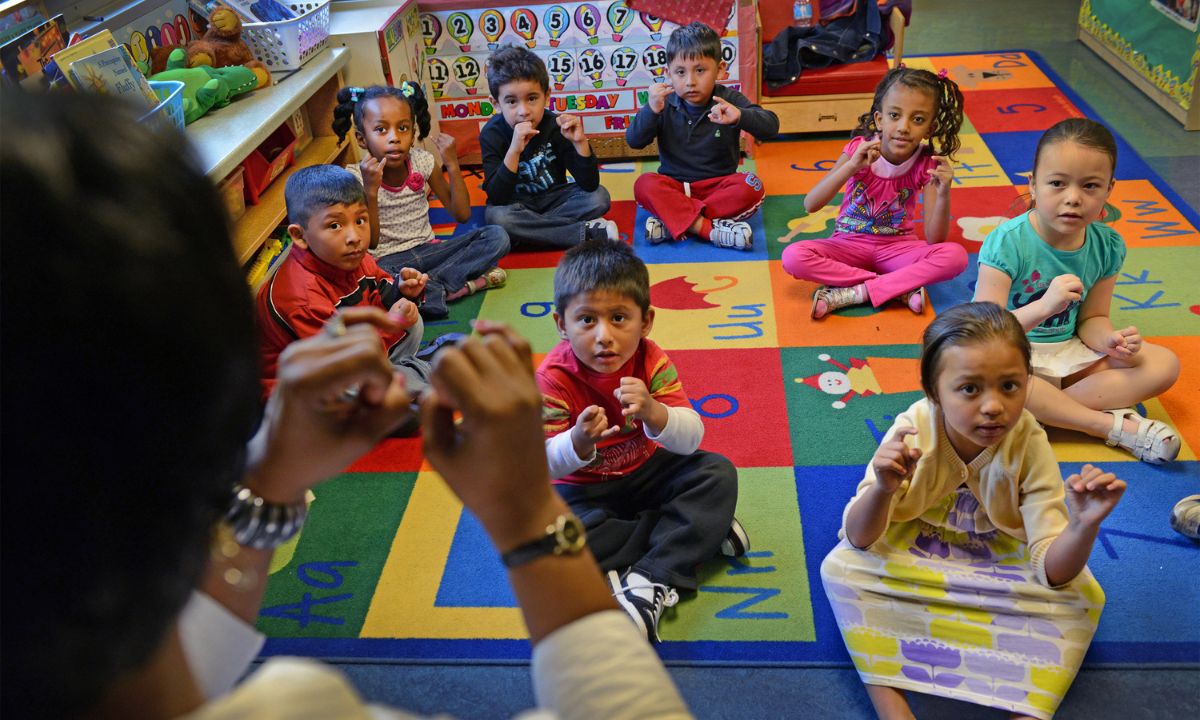States Create Trust Funds to Bolster Child Care and Early Childhood Education
With federal funds from the American Rescue Plan gone, some states have established trust funds dedicated to early care and education.

Join our zero2eight Substack community for more discussion about the latest news in early care and education. Sign up now.
The pandemic sent state lawmakers a very clear message: child care is vital, and when it disappears, it creates chaos for families, providers and employers. But just because they realized it’s important doesn’t mean it’s easy to fund. Now some states have embarked on a novel approach: creating trust funds that can serve as ongoing, stable sources of money for early care and education.
Rather than states annually shaking their couch cushions to find extra money to put toward child care and early education, these trusts create “dedicated, permanent funding streams,” said Diane Girouard, state policy analyst at Child Care Aware of America.
During the pandemic, states received billions of dollars in federal funding from the American Rescue Plan, which they put to a number of creative and effective uses like increasing compensation for staff and lowering the price tag for families. With that funding now gone, many have been trying to figure out how they can keep these investments going. Some states have implemented dedicated taxes to fund child care, such as a new payroll tax in Vermont, the so-called “millionaires tax” in Massachusetts and a capital gains tax in Washington state. Trust funds represent a new way to do something similar without raising taxes.
New Mexico was ahead of the curve. In 2022, voters approved a ballot measure to devote some of the state’s existing Land Grant Permanent Fund, which collects money from oil and gas development, to child care and early education. The money allowed the governor to make child care free for nearly all families in the state. The state has also increased teacher pay and reimbursements for providers who accept subsidies while creating more slots. In April, state lawmakers passed legislation doubling the minimum amount the fund will spend on early education each year.
This idea has spread. Last year, Connecticut lawmakers created an early childhood endowment but didn’t put any money into it. This year they passed legislation to fill it with any surplus revenues that haven’t been committed at the end of every year. In Connecticut, that will add up quickly thanks to self-imposed caps that force legislators to spend less than they otherwise could. Much of the excess money has been flowing into the state’s rainy day fund, but the fund is flush with money and the state is in “fairly good fiscal shape,” said Merrill Gay, executive director of the Connecticut Early Childhood Alliance. So lawmakers decided to route it into a separate fund for early care and education.
Connecticut Governor Ned Lamont called the funding the “largest expansion of access to early childhood education in Connecticut history.” The fund received $300 million in July, and it could get as much as $300 million annually in subsequent years. Gay anticipates it will have nearly $1 billion by 2028.
At that point, lawmakers will draw down a portion and use it to ensure that families making $100,000 or less pay nothing for child care and those who earn more will pay no more than 7% of their income. It is also supposed to create 16,000 new slots by 2030.
The money will be invested by the state treasurer, which means it will grow with investment returns. Eventually, it should generate enough money that it can be “self-sustaining,” Gay said, meaning it won’t have to compete with other issues like Medicaid or higher education for revenue.
But Gay noted that it’s nowhere close to creating a truly universal system. His organization’s estimate of the cost of guaranteeing universal pre-K and infant and toddler care, while paying providers equivalent to public school teachers, is $2.8 billion. “I don’t think we’re ever going to get to having $2.8 billion in the endowment,” he said. Meanwhile, if the state budget craters — which it could, for example, once the enormous Medicaid cuts Republicans recently passed take effect — there may be no surplus to put in the fund at all.
Montana lawmakers also created a trust for early care and education this session, though unlike Connecticut’s, Montana’s is part of a much bigger structure. Dubbed the “Growth and Opportunity Trust,” or the “GO Trust,” it will receive about $600 million in state money the first year and $400 million in the second. Half of the interest that money generates will be spent on a variety of priorities, including infrastructure projects, a property tax credit and grants for child care providers. The child care portion received an initial investment of $10 million and its share of the interest is expected to be about $5 million a year after two years.
A state senator had proposed a standalone trust for early childhood that would have received $150 million this year, but that instead got sucked up into the larger legislation. It isn’t a new idea for the state. Legislation to create a trust fund for child care was proposed in 2021 and 2023, said Alex DuBois, policy and engagement director at Zero to Five, but neither panned out.
In the 2023 legislative session, as the American Rescue Plan money the state had used to support child care programs and families began to fade, conversations started up about how to keep some of it going, said Grace Decker, coordinator at Montana Advocates for Children. It’s not just the loss of those dollars; before the pandemic, the state received federal preschool development grants that it used to set up pilot preschool programs, but when the state didn’t find ongoing funding the classrooms closed. A trust was seen as a way to keep promising initiatives going.
The effort to create a trust was aided by the fact that the state had a budget surplus in both the 2023 and 2025 legislative sessions. Lawmakers wanted to find a way to make “an enduring investment” in key priorities, Decker said, that could survive potential fiscal downturns. Lawmakers saw child care as one of those priorities alongside others like housing and infrastructure. In fact, DuBois’s organization was successful in arguing that child care should be included alongside infrastructure investment because it, too, is “part of our state’s infrastructure,” she said.
DuBois also advocated for the child care trust by pointing to other states that have passed similar legislation. New Mexico was a big inspiration, she said, but so were Louisiana, which created a fund in 2017 to match money spent at the local level; Kentucky, which created a fund in 2022 with money from a tobacco settlement alongside state revenues and private funding; and similar structures in a handful of other states.
Decker cautioned, however, against the trust being seen as a final solution for the child care system. When Governor Greg Gianforte vetoed another priority for her coalition, a bill to expand child care scholarships for the children of providers, he pointed in part to the creation of the trust in his rationale. “It’s concerning to think that lawmakers may look at the trust as a sufficient source of funding for the kinds of things we know we need to see as investments in the early childhood system,” she said. That’s particularly true, she said, in a state that doesn’t invest as much as others. “It’s a long time before that trust would deliver enough resources to get to an equitable system.”
Even so, advocates are excited about the legislative win. The trust “really shows a commitment to child care and early childhood,” DuBois said. Montana is a particularly significant example, Girouard said, because it’s “a more conservative state.” If lawmakers there can get on board, others in purple and red states could, too.
These trust funds should stand up against the fluctuations in federal funding and state budget revenues. “This absolutely ensures that funding keeps flowing,” Girouard said. “That is just so important to making sure that we have a vital and long-term child care system in place for families to count on.”
“It is something every single state can look into,” she added. “It’s a really great idea.”
Get stories like these delivered straight to your inbox. Sign up for The 74 Newsletter


;)
